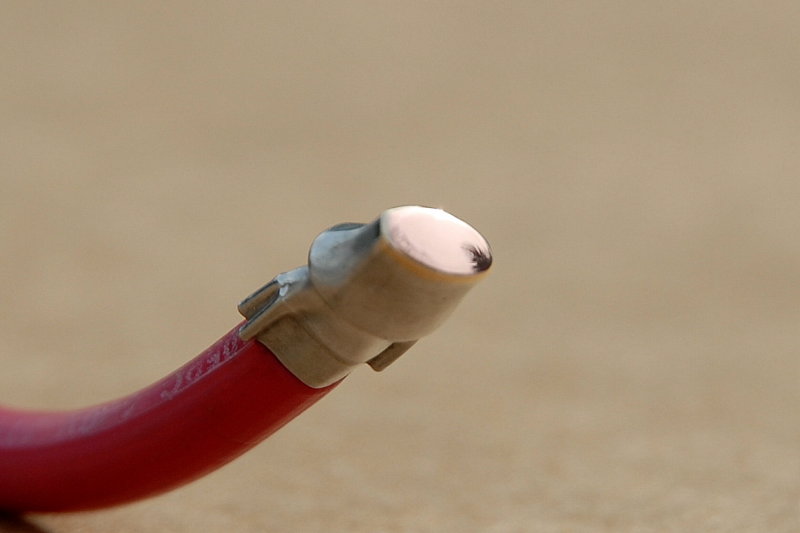Cruising Sailors Forum Archive
In a well made lug crimp solder will not flow into it. Tried numerous times then cut them open with a Dremel to see what happened. If you use "hammer crimpers" or staking/dimpling tools then yes solder will flow into the crimp because they are very poorly made and executed. They are not a "gas tight" crimp. A well crimped lug will be a 360 compression of the lug, just like swaging your standing rigging. It shrinks the entire OD of the copper lug around the cable as opposed to simply deforming it and "mashing" it onto the cable.
The difference between stainless steel and copper is that copper wire is softer and cold forms to leave no space big enough for solder to wick into, if the right tool and matched lug were used..
If your crimped, or better stated, "mashed & deformed" lugs take solder in the area were the crimp was made, it is simply not a good crimp and the solder can serve a purpose. In a well made crimp, with a compression or swage style tool, the lug will not take solder where crimped. If it does it is the wrong sized die or wrong sized lug..
This is a photo of a 10GA Yellow AMP PIDG ring terminal crimped with an AMP PIDG crimp tool for "yellow" insulated terminals. I removed the yellow nylon jacket and then cut the crimp in the middle. I polished with with a rouge to see of it would leave any "specs" or "tracks" in any gaps in the crimp. A compression battery lug crimp tool does a far better job than even this tool does for crimping yellow insulated terminals.(nl)
Messages In This Thread
- Large capacity electric cable
- I'd not use just welding cable, I'd use tinned marine grade cable (Ancor, or equal).
- When I did my windlass...
- Soldering Hi amp wire is a bad idea
- Our 2500 watt inverter was connected with Locomotive Cable
- How about a higher voltage motor?
- Agree with Tom in WA
- My understanding has little to do with the inabililty of solder to handle the load..
- In a well made lug crimp....
- My understanding has little to do with the inabililty of solder to handle the load..